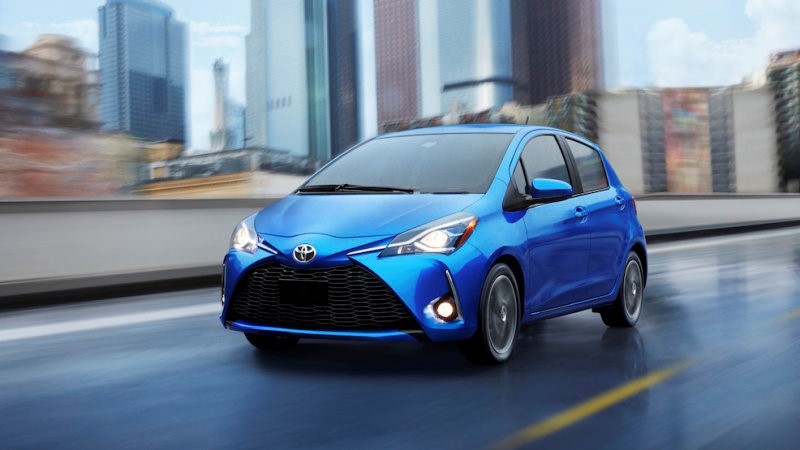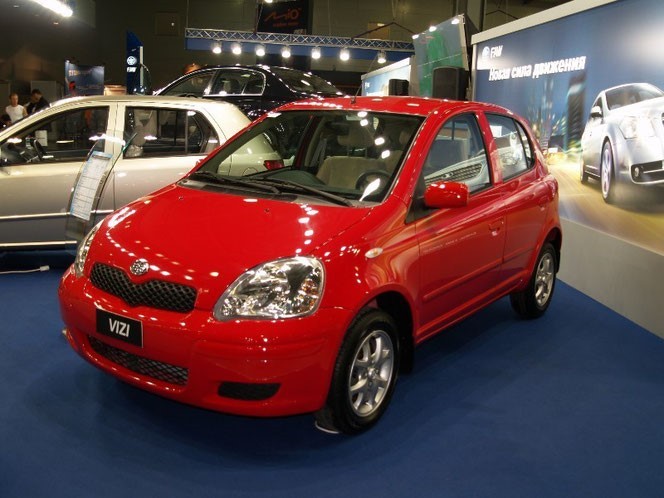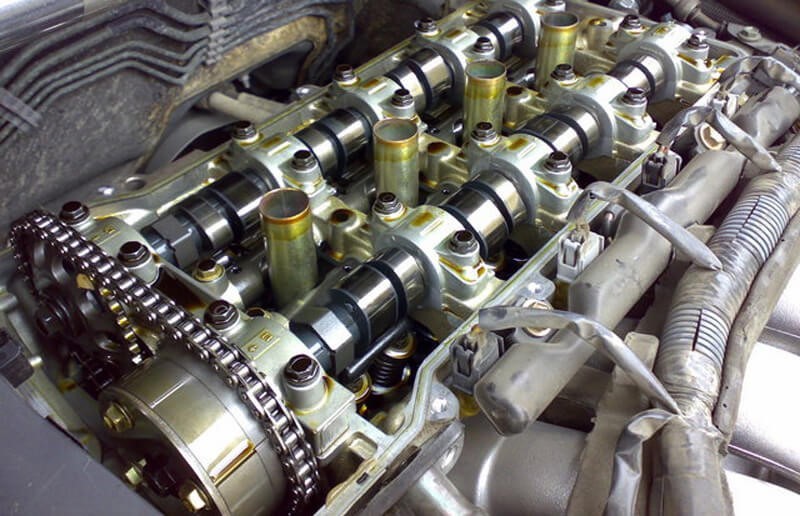
Toyota Yaris engines
Content
The Frankfurt Motor Show in 1998 was the premiere for the new concept car of the Japanese auto giant Toyota - FanTime. It took the designers only six months to fine-tune the car and present it in Geneva under the Yaris brand. The serial version differed from the "progenitor" by a more strict interior lighting device. Designed in a purely Japanese minimalist style, the miniature front-wheel drive hatchback replaced the outdated Toyota Starlet. The car instantly won its buyer in the showrooms of Europe (Vitz) and America (Belta).

History of creation and production
Just two years after the official premiere, the new car won the European Car of the Year 2000 nomination. For the market of the old world, the release of Yaris was launched at one of the French auto enterprises. With its design, the compact body of the hatchback was most similar to the Peugeot 3 Series models. The concept car is a three- or five-door front-wheel drive hatchback. The success of the model allowed Toyota managers to experiment with body shape: minivans rolled off the assembly line in America under the Toyota Verso brand, and sedans were stamped for European buyers.

Equally varied was the choice of transmissions. A “robot” was installed on the most low-power 1-liter engines, and an automatic transmission was installed on 1,3-liter engines. In 2003, Toyotz released slightly more powerful 1,5-liter cars as part of a restyling. American buyers could purchase the Echo sedan and hatchback. Yaris was produced even in China under the FAW Vizi brand.
At first glance, the Yaris is clear that this is the perfect car for women. Ease of driving - 5 points. All functions of the electronic "brain" are duplicated by the "own" LED" on the dashboard. Here, the designers and engineers of the electrical unit have taken the best from the Renault Twingo.
The information display of this car was noted by a huge number of users as the best among all popular car brands. In terms of the transformational ability of the cabin and operational safety, everything is also at the highest level: 5 stars according to the EuroNCAP standard.

But saving on expensive materials for finishing different parts of the cabin still makes itself felt - the impression is not ideal. In addition, the Yaris is not at all an ideal car in terms of soundproofing. At high speed, a whole “sound bouquet” is prepared for passengers:
- tire noise;
- the howl of the wind;
- the sound of a running engine.
All this does not contribute to long family trips in the cabin of this, in general, a rather successful car.
The male part of the inhabitants of the front left seat of the Toyota Yaris prefers to test the more “mundane” qualities of the car. First of all, manageability. A not very powerful engine paired with an automatic or robotic gearbox does not cope too well with long, gentle climbs on straight stretches of autobahns.
The engine simply starts to "sneeze". The ideal mode of operation of the automatic transmission is “pedal to the floor” in second or third gear. Just what is more suitable for the female half of the family is city walks between cafes and shops.
Engines for Toyota Yaris
For Yaris hatchbacks of 2-4 generations (XP90-XP130) in 1998-2006, Japanese engine builders produced 4 types of power plants with a working volume of 1,0, 1,3 and 1,5 liters, with a capacity of 69-108 hp:
| Marking | Type | Volume, cm 3 | Maximum power, kW / h.p. | Supply system |
|---|---|---|---|---|
| 2SZ-FE | petrol | 1296 | 64/87 | DOHC |
| 1KR-FE | petrol | 996 | 51/70 | DOHC, Dual VVT-i |
| 1NR-FE | gasoline atmospheric, with compressor | 1329 | 72/98 | DOHC, Dual VVT-i |
| 1NZ-FE | gasoline atmospheric | 1496 | 79/108 | DOHC |
The 2SZ-FE engine, developed by Daihatsu, had a serious drawback associated with errors in the operation of the gas distribution mechanism. This is due to the unsuccessful design of the Morse chain. Its slightest weakening during movement led to jumping off the pulley. As a result - a sensitive blow of the valve plates on the pistons.
Such an unsuccessful design solution severely limited the model range in which this engine was used to four items.
The smallest engine in the range used on the Yaris, the 1KR-FE is another product from Toyota's subsidiary Daihatsu's engine division. The three-cylinder 70-horsepower unit with a compression ratio of 10,5: 1 weighs only 68 kg. The development of Japanese engineers received the first prize at the "Engine of the Year" competition four times in a row - from 2007 to 2010.
This was facilitated by a whole "bouquet" of know-how:
- gas distribution system VVTi;
- MPFI electronic fuel injection;
- plastic intake manifold to improve the filling of cylinders with a combustible mixture.
The motor showed one of the best results among all automakers in terms of environmental friendliness - only 109 g / km.
The NZ series engine was the most powerful of all the engines for the Yaris. The four-cylinder mechanism has separate wires for signaling the injectors. Like representatives of the "junior series", 1NZ-FE is equipped with a VVTi gas distribution system. Fuel injection - sequential, SFI. Ignition system - DIS-4.

The 1NR-FE engine began to be installed on the European Yaris series, abandoning the obsolete 4ZZ-FE. In the domestic Japanese market, new series and restylings of other modifications received a new engine instead of 2NZ-FE and 2SZ-FE. Two key engine mechanisms have been improved:
- pistons;
- intake manifold.
Vehicles intended for operation in countries with a harsh low-temperature climate received a coolant heating system in the "cold start" mode.
Despite the specific nature of the engines, they "hit" 14 different modifications of Toyota cars:
| Model | 2SZ-FE | 1KR-FE | 1NR-FE | |
|---|---|---|---|---|
| car | ||||
| Toyota | ||||
| Auris | * | |||
| beautiful | * | * | ||
| Corolla | * | |||
| Corolla Axios | * | |||
| iQ | * | * | ||
| Passo | * | * | ||
| Doors | * | |||
| Probox | * | |||
| After the race | * | * | ||
| roomy | * | |||
| Spade | * | |||
| tank | * | |||
| vitz | * | * | * | |
| Yaris | * | * | * | |
| Total: | 4 | 7 | 11 | 22 |
Official Yaris with 1496cc turbocharged engine3 Toyota did not present, but since 2010 it has not been difficult to purchase cars with a supercharger. Another engine that quickly “came” into this series is a common rail turbocharged diesel engine with a power of 75 hp. The best choice for this type of power plant is a manual transmission.
However, if an automatic clutch is installed in conjunction with it, driving turns into torture.
First you need to start the engine at neutral speed. The starter in any other gear at this moment remains blocked. Next is the shift of the lever, after which the electronics are taken to work. The clutch works according to the position of the lever and the pedals. When the required speed is slipped, a control lamp flashes on the control panel, which reports an error.
The most popular engine for Yaris cars
The 1NR-FE motor is most widely used on Yaris modifications. Its production was established at European and Japanese engine-building enterprises. The first body modification on which it was installed was XP99F (2008). The design team introduced a number of new products, which later became widespread.
- Improving the design of the intake manifold by computer simulation.
- Updated material (carbon ceramide) design, reduced piston weight.

The 98-horsepower engine with an open-type cooling system is designed to comply with Euro 5 environmental standards. The maximum allowable emission level is 128 g / km., Thanks to the action of the EGR valve controlled by a stepper motor. The "red line" level, the so-called cutoff, is at 6000 rpm.
Due to the non-smooth surface of the cylinder liners, adhesion and the level of heat transfer to the coolant have improved. In theory, it is impossible to bore the cylinder block for tuning the engine in terms of power. This is due to the fact that the distance between the blocks is minimal - only 7 mm.
The layout of the manifolds: intake (plastic) - at the back, exhaust (steel) - at the front.
The 1NR-FE motor is fantastically reliable.
Of the tangible shortcomings, only two can be noted:
- increased oil consumption;
- difficulties with the cold start mode.
After reaching 200 thousand km. run, a knock of the drives of the VVTi mechanism and soot on the walls of the intake manifold may appear. In addition, the water pump may be leaking.
The perfect motor choice for Yaris
The answer to this question is obvious. Of those engines that became the basis of the power plants of Yaris cars, the 1KR-FE turned out to be the most advanced. Four car of the year awards in a row are the result of the fruitful work of the Daihatsu engineering team.
First, the weight of the engine was reduced as much as possible. To do this, large-sized parts of the engine are cast from aluminum alloys instead of steel. This list included:
- cylinder block;
- oil pan;
- Cylinder head.

VVTi, long-stroke connecting rods and an intake tract optimization system allow you to achieve a high level of torque both at high and low revs. To reduce power losses during friction, the piston group is treated with a composition that increases wear resistance. The shape and size of the combustion chambers allow to achieve the best conditions for the moment of ignition of the fuel mixture. This is the reason for the fantastically low amount of harmful emissions in the exhaust of the 1KR-FE engine.

